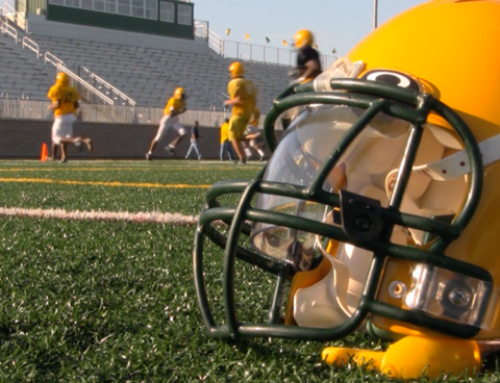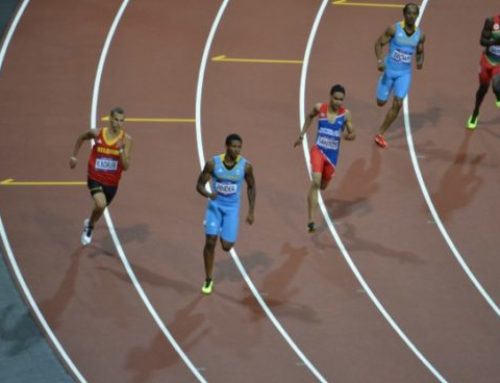
Several workouts train you to be fast, but it’s equally important to understand how to run when you are placed in a situation. The following workout is for athletes who sprint in the 100-meters. If racing on Sunday, perform this workout on the preceding Thursday after a dynamic warm up. (See Tyson Gay’s 100-Meter Sprint Strategy.)
The 100-Meter Sprint
Set Up: you need several cones to mark the distances. Place your blocks at the starting line and place a cone at 10, 15 , 40, 50, 60, 70, 80 and 100 meters. This gives you the chance to practice the phases that you will be running through in the 100-meters. (See Speed Phase Drills: Training for Complete Speed Development.)
0-15 meters
This is your drive phase; you need come out of the blocks staying low, with your body at a 45-degree angle, with good triple extension in the ankles, knees, and hips. Apply as much force as possible into the ground and drive your arms and legs as fast you can. At the 10-meter mark, transition into the acceleration phase (this should take 5 meters).
15-50 meters
This is your acceleration phase. In this phase, you are pushing your hips forward and applying force into the ground. On ground contact, your feet should push back against the track. Keep your head in line with your body and your eyes looking down in front of you.
40-70 meters
This is your max velocity phase, where you should be at full speed. Some athletes can transition early and be at full speed at the 40-meter mark; others reach it at the 50-meter mark. Your body should be upright and standing tall, with no forward or backward lean. You’ll only be able to run in this phase for around two to three seconds.
60-80 meters
This is the maintenance phase. Don’t try to run faster or you might tighten up. All you want to do is to maintain your current speed. Some athletes can start this phase at the 60-meter mark, others at the 70-meter mark
70-100 meters
This your deceleration phase. You want to relax until you reach the finish line. Some athletes can start this phase at the 70-meter mark and others wait until the 80-meter mark.
Photo: fastrack.edublogs.org
RECOMMENDED FOR YOU
MOST POPULAR
Several workouts train you to be fast, but it’s equally important to understand how to run when you are placed in a situation. The following workout is for athletes who sprint in the 100-meters. If racing on Sunday, perform this workout on the preceding Thursday after a dynamic warm up. (See Tyson Gay’s 100-Meter Sprint Strategy.)
The 100-Meter Sprint
Set Up: you need several cones to mark the distances. Place your blocks at the starting line and place a cone at 10, 15 , 40, 50, 60, 70, 80 and 100 meters. This gives you the chance to practice the phases that you will be running through in the 100-meters. (See Speed Phase Drills: Training for Complete Speed Development.)
0-15 meters
This is your drive phase; you need come out of the blocks staying low, with your body at a 45-degree angle, with good triple extension in the ankles, knees, and hips. Apply as much force as possible into the ground and drive your arms and legs as fast you can. At the 10-meter mark, transition into the acceleration phase (this should take 5 meters).
15-50 meters
This is your acceleration phase. In this phase, you are pushing your hips forward and applying force into the ground. On ground contact, your feet should push back against the track. Keep your head in line with your body and your eyes looking down in front of you.
40-70 meters
This is your max velocity phase, where you should be at full speed. Some athletes can transition early and be at full speed at the 40-meter mark; others reach it at the 50-meter mark. Your body should be upright and standing tall, with no forward or backward lean. You’ll only be able to run in this phase for around two to three seconds.
60-80 meters
This is the maintenance phase. Don’t try to run faster or you might tighten up. All you want to do is to maintain your current speed. Some athletes can start this phase at the 60-meter mark, others at the 70-meter mark
70-100 meters
This your deceleration phase. You want to relax until you reach the finish line. Some athletes can start this phase at the 70-meter mark and others wait until the 80-meter mark.
Photo: fastrack.edublogs.org










